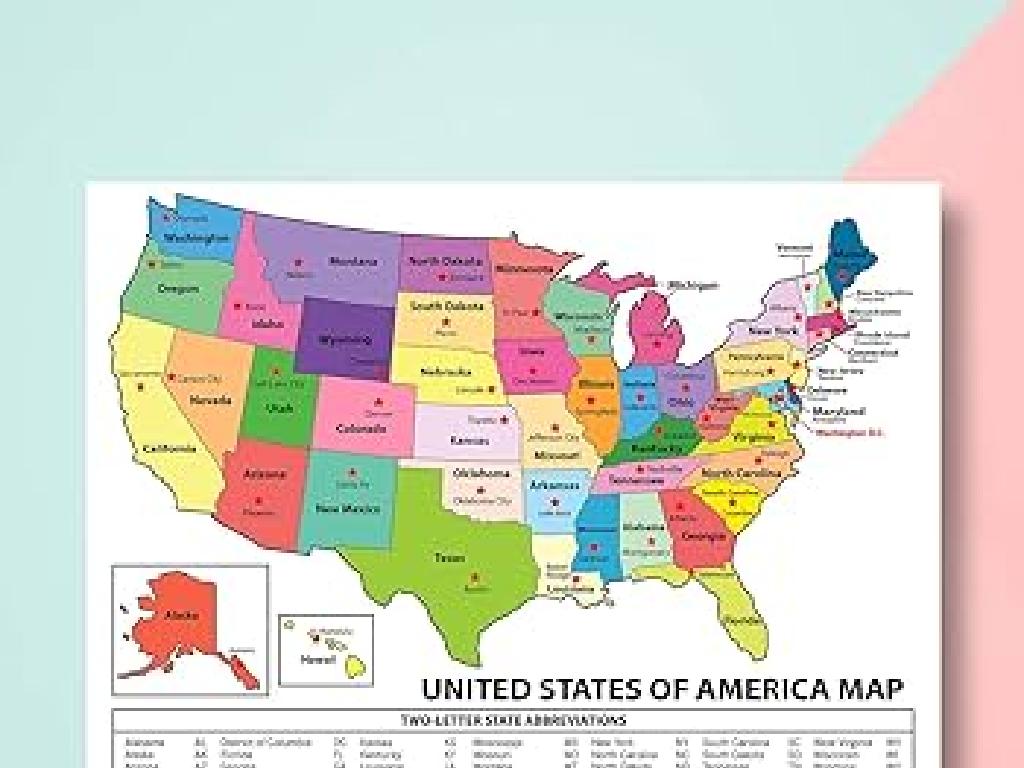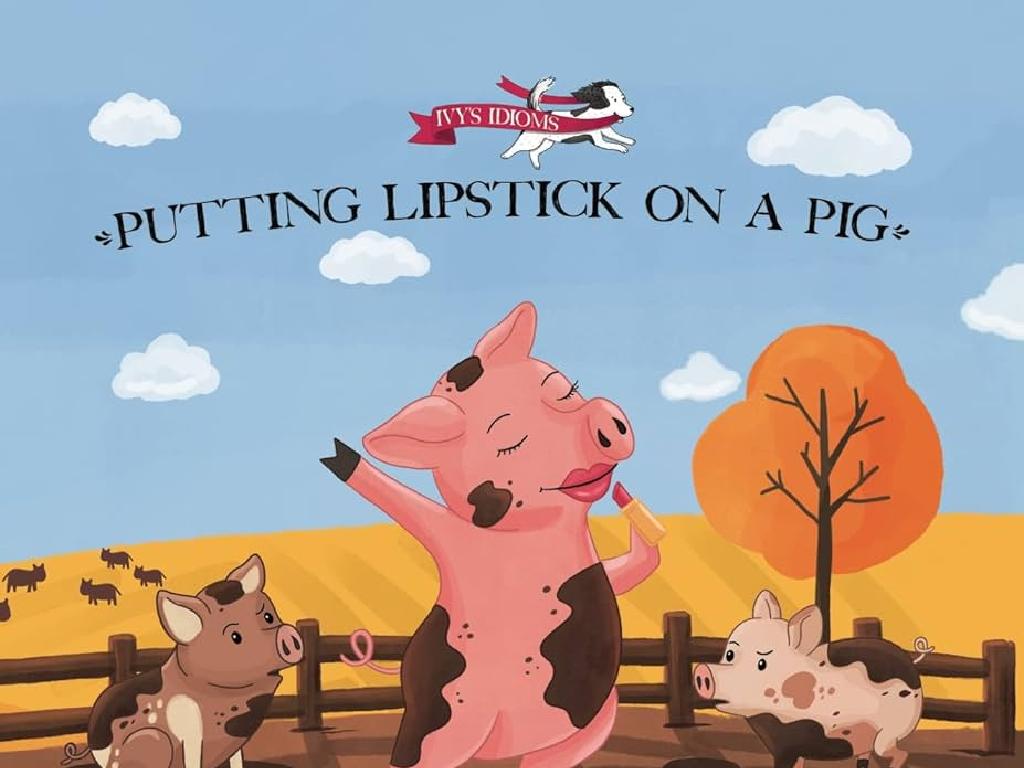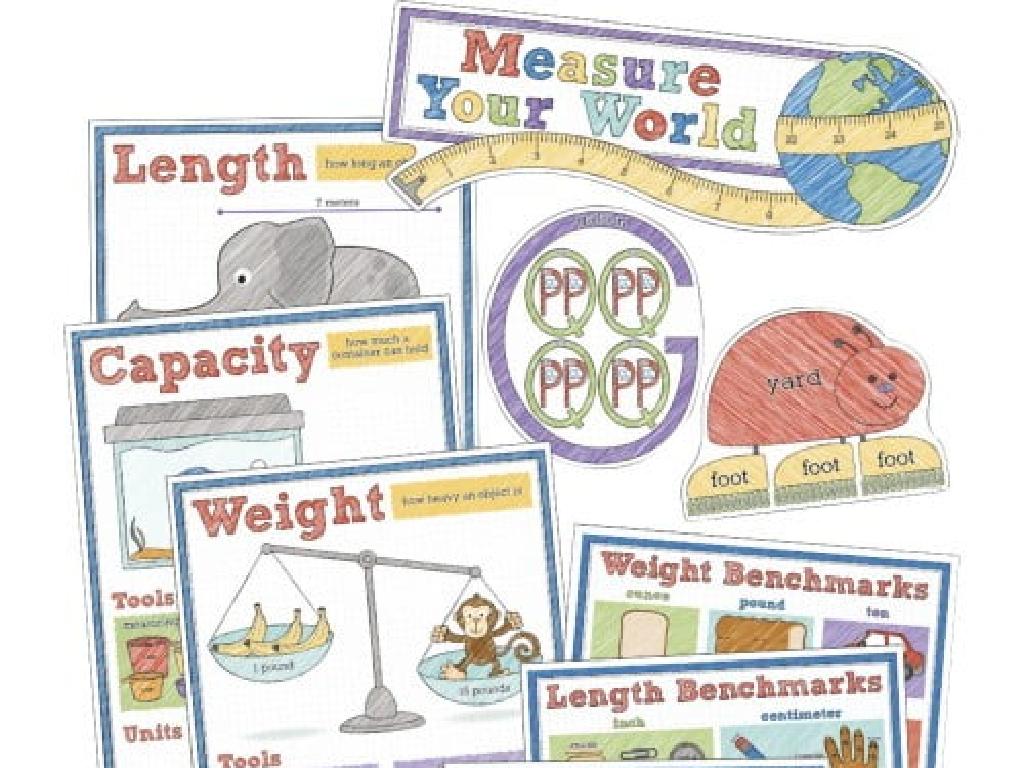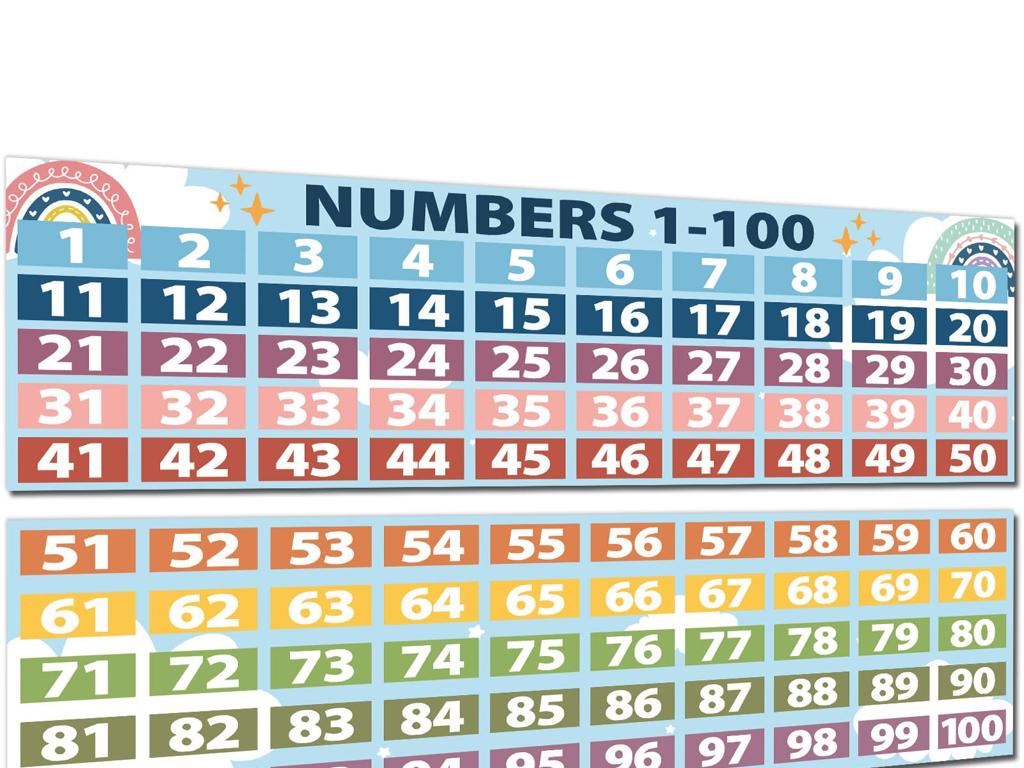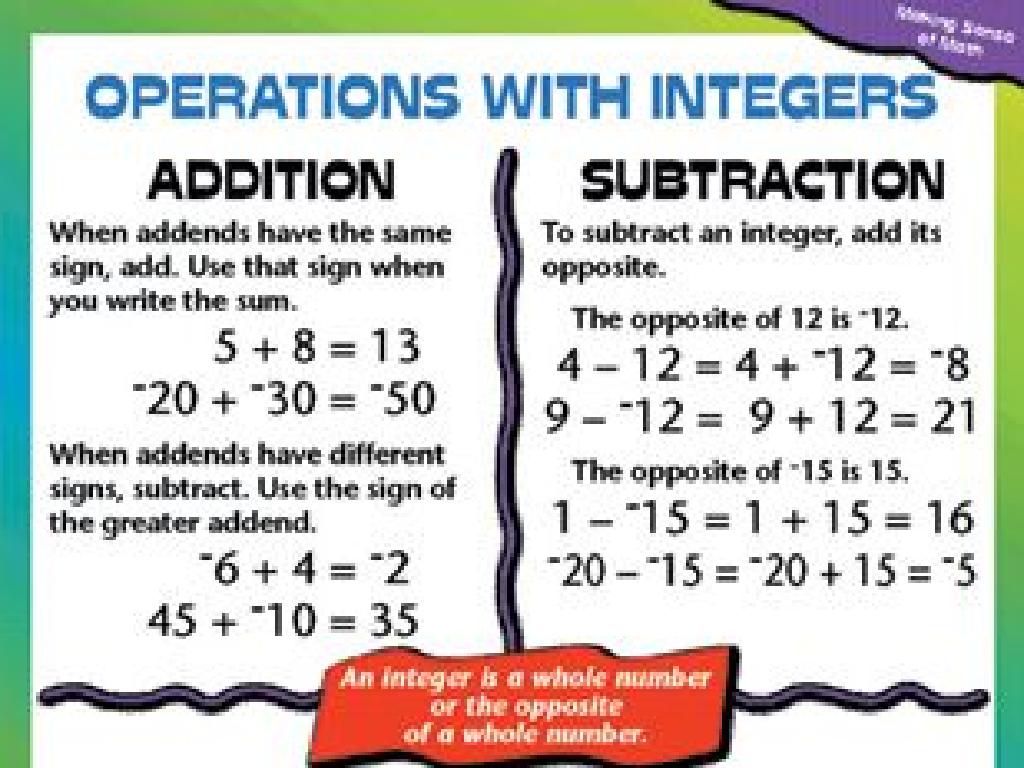Convert Between Percents, Fractions, And Decimals
Subject: Math
Grade: Sixth grade
Topic: Percents
Please LOG IN to download the presentation. Access is available to registered users only.
View More Content
Introduction to Percents
– Understanding what percents are
– Percents represent parts of a hundred, like 25% is 25 out of 100
– Relating percents to fractions and decimals
– 50% is 1/2 as a fraction and 0.5 as a decimal
– Observing percents in daily life
– Discounts in stores, test scores, and statistics
– Applying percent conversions
– Convert 75% to a fraction: 75/100 = 3/4, and to a decimal: 0.75
|
This slide introduces students to the concept of percents and their connection to fractions and decimals. Begin by explaining that ‘percent’ means ‘per hundred’ and is a way to express a number as a part of 100. Show how to convert percents to fractions by dividing by 100 and simplifying, and to decimals by moving the decimal point two places to the left. Use relatable examples like shopping discounts or grades to illustrate the use of percents in everyday life. Encourage students to practice by converting percents to fractions and decimals with various examples.
Understanding Fractions
– What is a fraction?
– A fraction describes how many parts of a certain size there are, e.g., 1/2 a pizza.
– Fractions represent parts
– Imagine a pizza cut into 4 pieces. Each piece is a fraction (1/4) of the pizza.
– Daily life fraction examples
– Examples: 1/2 hour of TV, 3/4 cup of sugar in a recipe.
– Practice with real fractions
|
Begin with a quick review of fractions, ensuring students recall that a fraction represents a part of a whole. Use tangible examples like slices of pizza to illustrate the concept of fractions as parts of a whole. Relate fractions to everyday life to make the concept more concrete, such as time spent on activities or ingredients in cooking. Encourage students to think of other examples from their daily routines where fractions are applicable. This will help them understand the relevance and prepare them for converting between fractions and other forms like decimals and percents.
Understanding Decimals
– What is a Decimal?
A decimal is a number with a point that separates the whole part from the fractional part.
– Decimals as Part of a Whole
Think of a pizza sliced into 10 pieces. Eating 3 pieces is like having 0.3 of the pizza.
– Decimals in Daily Life
Money is a common example: $0.75 means 75 cents, which is 3/4 of a dollar.
– Converting Decimals
To convert, move the decimal two places to the right for percent, and divide by 100 for fractions.
|
This slide introduces students to the concept of decimals and their role in representing fractions and percentages. Begin with a quick review of what a decimal is, emphasizing the decimal point’s role. Use relatable examples, such as pizza slices, to illustrate how decimals represent parts of a whole. Discuss everyday uses of decimals, particularly in money, to help students connect with the material. Finally, guide students through the process of converting decimals to percents by moving the decimal point two places to the right and to fractions by dividing by 100. Provide practice problems to reinforce these concepts.
Converting Fractions to Decimals
– Divide numerator by denominator
– If you have 3/4, divide 3 by 4
– Use long division or calculator
– Long division shows the steps, calculators are quick!
– Example: Convert 1/2 to decimal
– 1 divided by 2 equals 0.5
|
This slide is focused on teaching students the process of converting fractions to decimals. Start by explaining that the numerator (top number) can be divided by the denominator (bottom number) to find the decimal form. Demonstrate the process of long division on the board for a visual step-by-step guide, and show how a calculator can be used for quicker conversion. Use the example of converting 1/2 into a decimal to illustrate the concept. Have students practice with different fractions to ensure they understand the process. Encourage them to try both methods to see which they prefer and to understand the mechanics behind the conversion.
Converting Decimals to Percents
– Multiply decimal by 100
– To change a decimal to a percent, multiply by 100.
– Add a percent sign (%)
– Placing the % sign after a number shows it’s a percent.
– Example: Convert 0.75 to percent
– 0.75 * 100 = 75%
|
This slide introduces the concept of converting decimals to percents, which is a key skill in understanding percentages. Start by explaining that multiplying by 100 shifts the decimal point two places to the right, turning the decimal into a percent. Emphasize the importance of adding the percent sign to indicate that the number is now a percentage. Use 0.75 as a practice example to demonstrate the conversion process: multiplying 0.75 by 100 equals 75, and then we add the percent sign to get 75%. Encourage students to practice with different decimals to gain confidence in this conversion method.
Converting Percents to Fractions
– Write percent as fraction over 100
– Example: 75% becomes 75/100
– Simplify the fraction
– Divide by the greatest common factor
– Practice Example: 50% as a fraction
– 50% equals 50/100, which simplifies to 1/2
|
This slide introduces the concept of converting percents to fractions, which is a fundamental skill in understanding percentages. Start by explaining that any percent can be written as a fraction with a denominator of 100. This is because ‘percent’ means ‘per hundred.’ Once the percent is written in this form, students should look to simplify the fraction by finding the greatest common factor between the numerator and the denominator. The practice example of converting 50% to a fraction demonstrates this process. 50% is written as 50/100, which can be simplified to 1/2 because both 50 and 100 are divisible by 50. Encourage students to practice with different percentages to become comfortable with the conversion process.
Converting Fractions to Percents
– Start with fraction to decimal
– Divide numerator by denominator e.g., 1/2 = 0.5
– Then change decimal to percent
– Multiply decimal by 100 e.g., 0.5 * 100 = 50%
– Practice: Convert 3/4 to percent
– 3/4 as a decimal is 0.75, which is 75% as a percent
– Check understanding with examples
|
This slide is aimed at teaching students the two-step process of converting fractions to percents. Begin by explaining that any fraction can be converted to a decimal by dividing the top number (numerator) by the bottom number (denominator). Once the fraction is in decimal form, teach students to convert it to a percent by multiplying by 100. Use the example of 3/4 to illustrate the process: first convert 3/4 to 0.75 by division, then multiply 0.75 by 100 to get 75%. After explaining, provide additional examples and practice problems to ensure students grasp the concept and can apply it to different fractions.
Practice Time: Conversion Mastery
– Apply conversion skills
– Pair up for practice problems
– Work together to solve conversion problems
– Discuss solutions with your partner
– Explain your reasoning to each other
– Present findings to the class
– Share different methods used for conversions
|
This slide is designed to facilitate a collaborative learning experience where students can apply their knowledge of converting between percents, fractions, and decimals. Students should pair up and work through a set of conversion problems, discussing their strategies and solutions with each other. This peer interaction encourages learning from one another and clarifying misunderstandings. After completing the problems, pairs will share their answers and the methods they used with the rest of the class, fostering a community learning environment. As a teacher, circulate the room to offer guidance and ensure that each pair is on track. Prepare a diverse set of problems to cater to different skill levels and encourage students to explain their thought process when presenting to enhance their understanding.
Class Activity: Percent Scavenger Hunt
– Find percents, fractions, decimals in class
– Look for examples like 50%, 1/2, 0.50 on items or charts
– Convert each between all three forms
– Use conversion skills: 50% = 1/2 = 0.50
– Present your findings to the class
– Share what you found and how you converted them
|
This activity is designed to help students apply their knowledge of converting between percents, fractions, and decimals in a fun and interactive way. Set up the classroom with various items or charts that display numbers in different forms. Students will search for these numbers and convert each into the other two forms. Provide a worksheet for them to record their findings. After the scavenger hunt, each student will present their conversions to the class. This will reinforce their understanding and allow them to demonstrate their ability to convert between percents, fractions, and decimals. Possible variations of the activity could include working in pairs, setting a time limit, or creating a competition to see who can find and convert the most examples.
Wrapping Up: Percents, Fractions, and Decimals
– Review of conversion methods
– Homework: Practice worksheet
– Complete problems converting between percents, fractions, and decimals.
– Upcoming quiz announcement
– Quiz next class on these conversions. Be prepared!
– Study tips for conversions
– Review today’s lesson and practice with additional examples.
|
As we conclude today’s lesson on converting between percents, fractions, and decimals, remind students of the key methods we’ve learned. For homework, they should complete the provided worksheet which includes a variety of conversion problems to reinforce their understanding. Announce the quiz in the next class to ensure they come prepared, having reviewed the concepts and practiced sufficiently. Encourage them to revisit their notes from today’s lesson and to practice additional problems to solidify their grasp of the material. Offer some study tips, such as creating flashcards for different conversion steps or working in study groups to discuss the problems.

